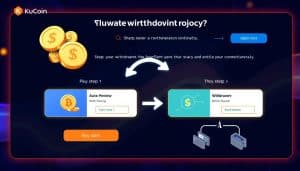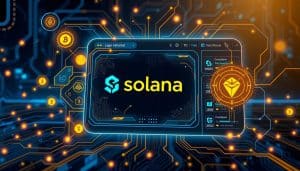Welcome to the world of Ethereum, where innovation and progress are constantly at the forefront. In the ever-evolving landscape of blockchain technology, the Ethereum Virtual Machine (EVM) plays a crucial role in executing smart contracts and powering decentralized applications. However, as with any technology, there is always room for improvement.
Table of Contents
ToggleWhat is the Ethereum EVM?
The Ethereum Virtual Machine (EVM) is a key component of the Ethereum blockchain. It serves as a runtime environment for executing smart contracts, which are self-executing contracts with the terms of the agreement directly written into code. Smart contracts enable decentralized applications (dApps) to run on the Ethereum network.
The EVM is designed to be a Turing-complete virtual machine, meaning it can execute any code that can be expressed algorithmically. This makes it highly versatile and capable of running complex applications with various functionalities. It can handle tasks such as managing digital tokens, enforcing rules and conditions, and interacting with other smart contracts.
The EVM operates on a consensus model, meaning that multiple nodes on the Ethereum network must reach an agreement on the execution of a smart contract. This ensures the integrity and security of the network, as well as prevents any single entity from having control over the network.
Developers can write smart contracts in high-level programming languages such as Solidity, and these contracts are then compiled into bytecode that can be executed by the EVM. The EVM uses a stack-based architecture for executing instructions, where each instruction manipulates items on a stack.
One of the core features of the EVM is its ability to handle and transfer Ethereum’s native cryptocurrency, Ether (ETH). The EVM has a built-in account system, and each account has an associated balance of Ether. Transactions on the Ethereum network involve the transfer of Ether between accounts and the execution of smart contracts.
The EVM has been a cornerstone of the Ethereum ecosystem, enabling the development of a wide range of decentralized applications and providing a platform for innovation. It has become a fundamental building block for blockchain-based solutions and continues to evolve to meet the growing demands of the Ethereum community.
Why is the Ethereum EVM important?
The Ethereum Virtual Machine (EVM) is a critical component of the Ethereum blockchain. Understanding its significance is essential in appreciating the capabilities and impact of the Ethereum ecosystem. Here’s why the Ethereum EVM is important:
- Execution of Smart Contracts: The EVM serves as a runtime environment for executing smart contracts. These self-executing contracts, written in code, enable trustless and automated transactions. The EVM’s ability to execute smart contracts efficiently has revolutionized the field of decentralized applications (DApps).
- Versatility and Flexibility: Designed to be versatile, the EVM allows developers to write smart contracts in high-level programming languages. This flexibility removes barriers to entry and attracts a wide range of developers, fostering innovation on the Ethereum platform.
- Secure and Decentralized: The EVM operates on a consensus model, ensuring network integrity and preventing single points of failure or control. This decentralized approach makes Ethereum robust, resistant to censorship, and highly secure.
- Ethereum Native Cryptocurrency: As the EVM’s responsibilities extend beyond executing smart contracts, it also handles and transfers Ethereum’s native cryptocurrency, Ether (ETH). This enables seamless integration between smart contracts and cryptocurrency transactions.
- Evolving with the Community: The EVM has continuously evolved to meet the demands and challenges of the Ethereum community. Regular upgrades, such as the upcoming Ethereum EVM Section Upgrade, demonstrate Ethereum’s commitment to improving the capabilities and efficiency of the EVM.
The Ethereum EVM is a fundamental piece of the Ethereum ecosystem, enabling the execution of smart contracts, fostering innovation, ensuring security, and handling Ethereum’s native cryptocurrency. Its adaptability and continuous evolution have made it a vital component in the world of decentralized applications and blockchain technology.
Limitations of the current Ethereum EVM
The Ethereum Virtual Machine (EVM) has been instrumental in enabling the execution of smart contracts and the development of decentralized applications on the Ethereum blockchain. However, it is important to acknowledge that the current EVM does have its limitations. Here are some of the key limitations of the current Ethereum EVM:
1. Scalability Challenges
As the popularity of Ethereum and the number of transactions on its network continue to grow, scalability has been a major concern for the EVM. The current EVM is limited in its capacity to process a large number of transactions efficiently. This can result in slower transaction speeds and higher fees, especially during times of network congestion.
2. Lack of Upgradability
Unlike traditional software applications, the current EVM does not provide a straightforward mechanism for upgrading its functionality or addressing any bugs or vulnerabilities. This lack of upgradability can limit the ability to improve the EVM’s performance, security, and features over time.
3. Gas Limitations
Gas is the unit used to measure the computational effort required to execute operations on the Ethereum network. However, the current EVM has gas limitations that can restrict the complexity and size of smart contracts. This can hinder the development of more sophisticated decentralized applications that require extensive computations or storage.
4. High Energy Consumption
The current EVM relies on a Proof of Work (PoW) consensus algorithm, which requires significant computational power and energy consumption. This high energy consumption not only has environmental implications but also makes it less cost-effective for dApp developers and users.
5. Lack of Privacy
The current EVM does not provide built-in privacy features, which means that all transactions and smart contract interactions are publicly visible on the blockchain. This lack of privacy can be a deterrent for certain use cases, particularly in industries that require confidential transactions or sensitive data protection.
It is essential to acknowledge these limitations as the Ethereum community continues to work towards addressing them. Through ongoing research, development, and innovation, many of these limitations can be overcome in future updates and enhancements to the Ethereum EVM. By addressing these limitations, the Ethereum ecosystem can become more scalable, efficient, and feature-rich, further supporting the growth and adoption of decentralized applications.
Introduction to the Ethereum EVM Section Upgrade
The Ethereum Virtual Machine (EVM) is an essential component of the Ethereum ecosystem, serving as the runtime environment for smart contracts. However, the current version of the EVM has its limitations, which call for an upgrade to address these challenges. This section explores the Ethereum EVM Section Upgrade and its potential to enhance the functionality and performance of the EVM.
Why is an upgrade necessary?
The current EVM poses several limitations that hinder its scalability, flexibility, and efficiency. These limitations include:
- Scalability Challenges: As the popularity of decentralized applications (DApps) grows, the EVM faces difficulties in processing a high volume of transactions in a timely manner.
- Lack of Upgradability: The existing EVM is not easily upgradable, making it challenging to introduce new features, fix bugs, or improve its performance without disrupting the entire Ethereum network.
- Gas Limitations: Gas is a measure of computational effort required to execute operations on the Ethereum network. The EVM’s gas limit restricts the complexity and size of smart contracts, limiting their functionality.
- High Energy Consumption: The current EVM’s energy consumption is considered high, resulting in increased costs and environmental concerns.
- Lack of Privacy: Transactions conducted on the Ethereum network are transparent and visible to all participants, creating privacy concerns for users.
The Ethereum EVM Section Upgrade
The Ethereum EVM Section Upgrade aims to overcome these limitations by introducing improvements and enhancements to the existing EVM. This upgrade seeks to:
- Improve Scalability: The upgrade will optimize the EVM’s performance to handle a larger number of transactions, enabling smoother and faster execution of DApps.
- Enable Upgradability: The new EVM will be designed with upgradability in mind, allowing for the introduction of new features, bug fixes, and optimizations without disrupting the entire network.
- Gas Limit Adjustments: The upgrade will address the gas limitations of the current EVM by adjusting the gas limit, accommodating more complex and extensive smart contracts.
- Reduce Energy Consumption: The upgraded EVM will prioritize energy efficiency, reducing the environmental impact and lowering costs for participants.
- Enhance Privacy: The Ethereum EVM Section Upgrade will explore solutions to enhance the privacy of transactions, providing users with more control and confidentiality.
Benefits of the Ethereum EVM Section Upgrade
The Ethereum EVM Section Upgrade brings several benefits to the Ethereum ecosystem. By addressing the limitations of the current Ethereum Virtual Machine (EVM), this upgrade aims to enhance functionality and performance, leading to a more efficient, scalable, and privacy-focused platform for decentralized applications.
Here are the key benefits of the Ethereum EVM Section Upgrade:
- Improved Scalability: The upgrade introduces optimizations that allow for greater scalability, addressing one of the major challenges faced by the current EVM. By improving the throughput and capacity of the network, more transactions can be processed quickly and efficiently, supporting a growing number of users and applications.
- Enhanced Upgradability: The Ethereum EVM Section Upgrade enables the ability to upgrade the EVM without requiring a hard fork. This means that developers can introduce new features and improvements to the EVM without disrupting the entire network. This flexibility encourages innovation and ensures that the Ethereum ecosystem remains adaptable to evolving needs.
- Adjusted Gas Limitations: Gas limitations have been adjusted in the Ethereum EVM Section Upgrade to strike a better balance between efficiency and cost. Gas fees play a vital role in securing the network and incentivizing miners, and these adjustments aim to optimize the cost-effectiveness of transactions while maintaining network security.
- Reduced Energy Consumption: The upgrade incorporates optimizations that lead to reduced energy consumption compared to the current EVM. This is a significant step toward sustainability and aligns with the increasing importance of environmentally-friendly solutions in the blockchain industry.
- Enhanced Privacy: The Ethereum EVM Section Upgrade includes improvements to enhance privacy features within the platform. These enhancements ensure that sensitive data and transactions are kept confidential, providing users with a higher level of privacy and security.
Overall, the Ethereum EVM Section Upgrade delivers significant benefits to the Ethereum ecosystem. With improved scalability, enhanced upgradability, adjusted gas limitations, reduced energy consumption, and enhanced privacy features, this upgrade paves the way for a more efficient, scalable, and privacy-focused future for Ethereum.
Implementation details of the Ethereum EVM Section Upgrade
The Ethereum EVM Section Upgrade introduces a number of key improvements to address the limitations of the current Ethereum Virtual Machine (EVM). Let’s delve into the implementation details of this upgrade:
Enhanced Scalability: The upgrade aims to improve the scalability of the Ethereum network by implementing various optimizations. These optimizations include reducing the time and resources required to process transactions and smart contracts. As a result, the network’s capacity to handle a larger number of transactions per second is significantly enhanced.
Upgradability: One of the major benefits of the Ethereum EVM Section Upgrade is its improved upgradability. The upgrade introduces a modular approach to smart contract execution, allowing for easier and more efficient upgrades to the virtual machine. This means that new features and improvements can be seamlessly integrated into the Ethereum network without disrupting existing applications.
Adjusted Gas Limitations: Gas is a unit of measure for the computational effort required to execute transactions and smart contracts on the Ethereum network. The EVM Section Upgrade adjusts the gas limitations, allowing for more flexible and cost-effective transaction processing. This change ensures that the network remains efficient and accessible for both developers and users.
Reduced Energy Consumption: Ethereum has been actively working towards reducing its energy consumption, and the EVM Section Upgrade is a significant step in that direction. By optimizing the execution of smart contracts, the upgrade reduces the energy required for transaction processing. This not only benefits the environment but also contributes to a more sustainable blockchain ecosystem.
Enhanced Privacy Features: Privacy has been a focal point for the Ethereum EVM Section Upgrade. The upgrade introduces enhanced privacy features that allow users to have more control over their data and transactions. These features include improved encryption methods and enhanced privacy protocols, ensuring that sensitive information remains secure and private.
This implementation of the Ethereum EVM Section Upgrade sets the foundation for a more scalable, upgradable, and privacy-focused Ethereum network. By optimizing key aspects of the virtual machine, Ethereum aims to provide a more efficient and secure platform for decentralized applications.
With the implementation details of the Ethereum EVM Section Upgrade covered, let’s explore the broader implications and benefits of this upgrade in the upcoming sections.
Potential challenges and risks
While the Ethereum EVM Section Upgrade brings numerous enhancements to the platform, it is not without potential challenges and risks. It is important to be aware of these factors to ensure a smooth transition and effective utilization of the upgraded Ethereum network. Here are some potential challenges and risks to consider:
- Compatibility Issues: As with any major upgrade, there is a possibility of compatibility issues with existing smart contracts and decentralized applications (DApps). Developers may need to make necessary adjustments to ensure their code is compatible with the upgraded EVM.
- Security Vulnerabilities: Introducing changes and updates to a complex system like the EVM could potentially expose new security vulnerabilities. It is crucial to thoroughly test and audit the upgraded EVM to identify and address any potential security risks.
- Network Congestion: The enhanced scalability features of the EVM Section Upgrade may attract a larger number of users and transactions to the Ethereum network. This surge in demand could potentially lead to network congestion and slower transaction processing times.
- Adoption Challenges: Encouraging developers and users to adopt the upgraded EVM may take time and effort. It is important to provide clear guidelines, documentation, and support for developers to ease the transition and ensure widespread adoption of the upgraded platform.
- Governance and Consensus: Upgrading a decentralized network like Ethereum requires consensus among the network participants. There may be differing opinions on the implementation details and potential trade-offs, which could prolong the decision-making process and introduce governance challenges.
- Regulatory and Legal Considerations: As the Ethereum network evolves, it is essential to monitor and comply with any evolving regulatory frameworks and legal requirements. Changes in regulations could impact the implementation and utilization of the upgraded EVM.
It is important to note that these challenges and risks are not insurmountable. With careful planning, testing, and collaboration within the Ethereum community, they can be effectively addressed and mitigated.
Roadmap for the Ethereum EVM Section Upgrade
The Ethereum EVM Section Upgrade brings about significant changes to the Ethereum Virtual Machine (EVM) that power the Ethereum network. In this section, we will outline the roadmap for the implementation of this upgrade.
- Research and Design: The first step in the roadmap is thorough research and design. The Ethereum community, including developers and researchers, collaborates to identify the areas of the EVM that require improvement and enhancement. This stage involves analyzing existing challenges, finding potential solutions, and designing the upgrades to the EVM.
- Testing and Deployment: Once the upgrades are designed, the next step is rigorous testing and deployment. The changes introduced by the EVM Section Upgrade must be thoroughly tested to ensure compatibility with existing smart contracts and DApps. The Ethereum community conducts extensive testing on test networks to identify and address any compatibility issues or security vulnerabilities.
- Community Feedback and Iteration: During the testing phase, the Ethereum community actively seeks feedback from developers, users, and stakeholders. This feedback is invaluable in identifying any potential issues or improvements that can be made to further enhance the EVM Section Upgrade. The community iterates on the upgrades based on this feedback, ensuring a robust and secure implementation.
- Educational Outreach: As the EVM Section Upgrade is rolled out, educational outreach becomes crucial. The Ethereum community organizes workshops, webinars, and documentation to educate developers and users about the changes introduced by the upgrade. This helps in promoting adoption and ensures a smooth transition for the Ethereum ecosystem.
- Governance and Consensus: The Ethereum community works together to establish the governance and consensus mechanisms for the EVM Section Upgrade. This involves discussions around the decision-making process, upgrade proposals, and community voting. Governance ensures that the upgrade is aligned with the vision and values of the Ethereum ecosystem.
- Monitoring and Continuous Improvement: After the EVM Section Upgrade is successfully implemented, monitoring and continuous improvement become essential. The Ethereum community closely monitors the performance and impact of the upgrade and makes necessary adjustments to address any unforeseen issues or optimize the functionality of the EVM.
By following this roadmap, the Ethereum community aims to ensure a smooth and successful implementation of the EVM Section Upgrade. The thorough research, rigorous testing, community feedback, and continuous improvement serve as the foundation for the evolution of the Ethereum ecosystem.
Conclusion
By following the roadmap outlined in this article, you can expect the Ethereum EVM Section Upgrade to be implemented smoothly and successfully. The steps of research and design, testing and deployment, community feedback and iteration, educational outreach, governance and consensus, and monitoring and continuous improvement have been carefully planned to ensure a seamless transition.
The Ethereum community is dedicated to continuously improving the Ethereum network and providing users with a secure and efficient platform. The EVM Section Upgrade is an important milestone in this journey, as it brings enhancements and optimizations to the Ethereum Virtual Machine.
As the upgrade progresses, it is important for the community to provide feedback and actively participate in the governance and consensus processes. This collaboration will help shape the future of Ethereum and ensure that it remains a leading blockchain platform.
Stay tuned for further updates and announcements regarding the Ethereum EVM Section Upgrade. Together, we can continue to build a robust and scalable ecosystem that empowers developers and users alike.
Frequently Asked Questions
What is the Ethereum EVM Section Upgrade?
The Ethereum EVM Section Upgrade is a planned implementation to improve the Ethereum Virtual Machine (EVM) section. It aims to enhance the performance, security, and efficiency of the Ethereum network.
What are the steps involved in the implementation of the EVM Section Upgrade?
The implementation of the Ethereum EVM Section Upgrade involves various steps. These include research and design, testing and deployment, community feedback and iteration, educational outreach, governance and consensus, and monitoring and continuous improvement.
Why is it important to follow the roadmap for the implementation of the EVM Section Upgrade?
Following the roadmap is crucial as it ensures a systematic and planned approach towards the implementation of the EVM Section Upgrade. It helps mitigate risks, address concerns, gather community input, and ensure a smooth and successful upgrade process.
How does the Ethereum community gather feedback during the implementation of the EVM Section Upgrade?
The Ethereum community actively seeks feedback from its community members during the implementation of the EVM Section Upgrade. This feedback helps in identifying potential issues, obtaining suggestions for improvement, and ensuring that the upgrade aligns with the needs and expectations of the Ethereum ecosystem.
What is the ultimate goal of the EVM Section Upgrade?
The ultimate goal of the EVM Section Upgrade is to enhance the overall performance, security, and efficiency of the Ethereum network. By implementing these improvements, it aims to provide a better user experience, attract more developers, and strengthen the position of Ethereum as a leading blockchain platform.





















